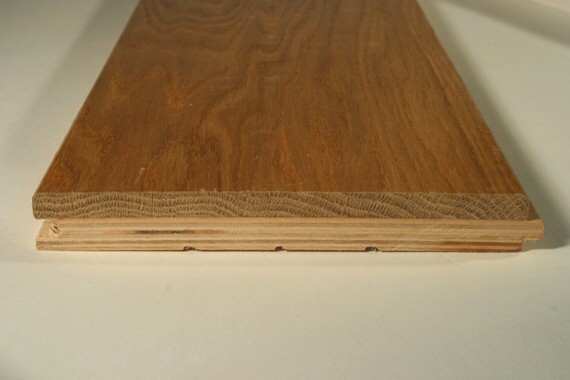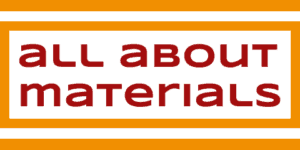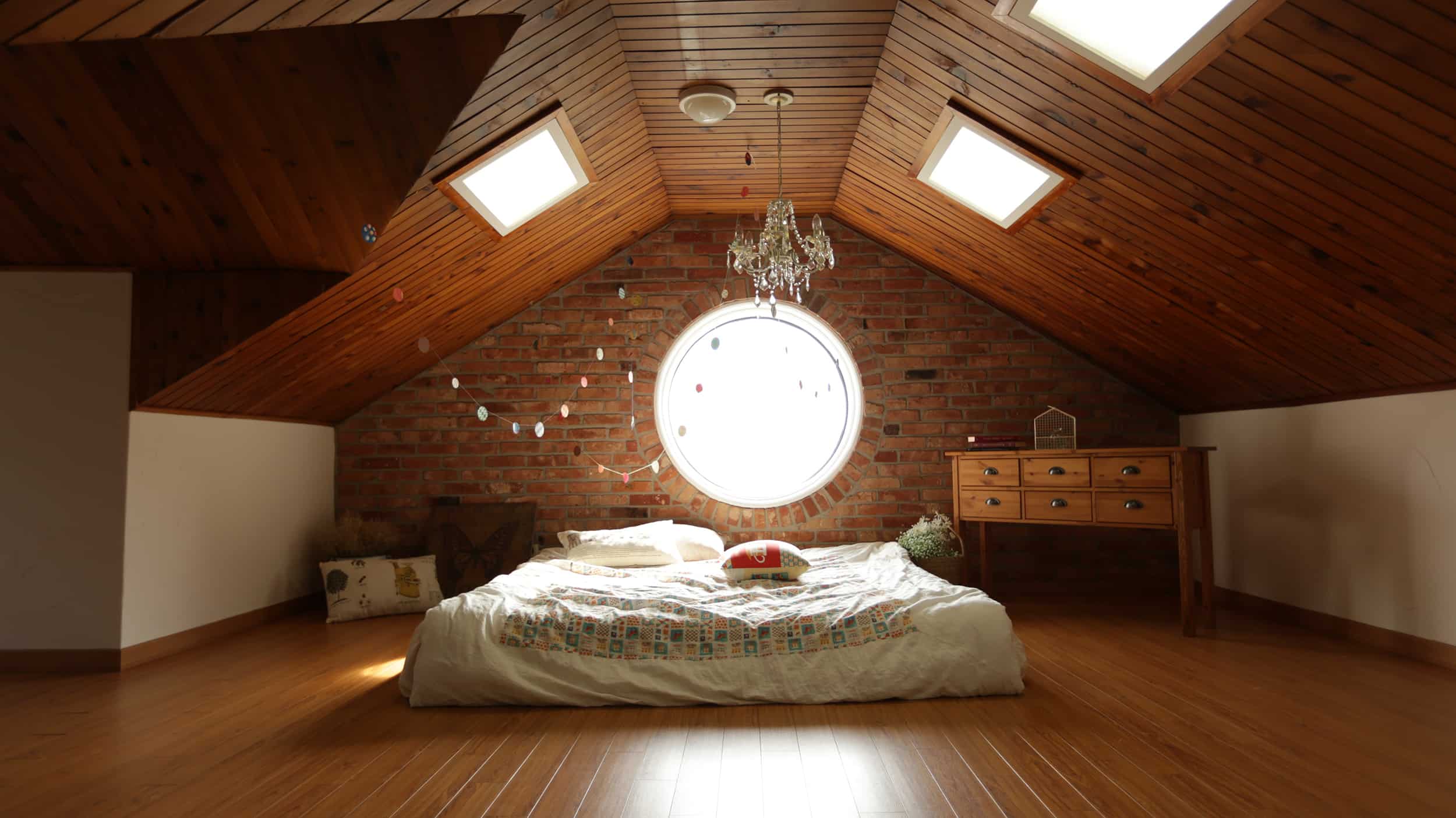This post contains affiliate links.
Engineered wood flooring is one of the most popular choice of material for floors because of its beauty and durability. It’s comparable to solid hardwood floors in that it is made of real hardwood but with additional advantages over the latter. Engineered wood floors can be a very good substitute to solid hardwood floors if you’re looking for durable wood flooring.
How long does engineered wood flooring last? It can last from 20 up to 100 years depending on several factors. These include the thickness and type of hardwood veneer top layer of the floor, the quality of the engineered wood flooring product that was used, and how well-maintained the flooring is.
Not all engineered wood flooring is the same and the expensive types are not necessarily the best. There are many factors you would have to examine and consider to get a good idea if an engineered wood flooring will last as long as you would want to. You should learn how to choose which ones are more durable and will last longer.
Factors that Determine the Longevity of Engineered Wood Floors

Engineered wood floors are constructed with two main layers, a top wear layer made of real hardwood veneer and a plywood core. It comes in various styles, widths, lengths, and thicknesses. And there are also several options on how you can install them
The plywood core is what makes engineered wood floors more dimensionally stable than solid hardwood floors. It is composed of several thin plies of wood with each ply placed on top of another and the grain direction perpendicular to the bottom ply grain direction. This cross-ply assembly makes the plywood core resist any dimensional changes due to moisture changes in the environment.
In most cases, the general rule of thumb you can follow is that the thicker the engineered hardwood board and the more layers it has, the more durable it is and the longer it will last.
On the lower end of the market, the boards can have a 3-ply core construction with a 1-2mm top wear layer, and around 1/4″ (6.35mm) in total thickness. The mid-end has 5-ply core construction with a 3mm top wear layer, which has a total thickness of around 1/2″ (12.7mm). The best and durable engineered hardwood floors come in 9 plies or more, has a 7mm or more top wear layer, with a total thickness of 3/4″ (19mm) or thicker.
Each engineered hardwood floor manufacturer will have their own combination of top wear layer and plywood core thicknesses and construction. It would be best to investigate how each product was constructed and finished before you decide on which board to get.
The Top Wear Layer
The top wear layer is usually made of real hardwood. You should opt to get a thick top wear layer with a hard type of wood species if you could. The thickness of this wear layer will dictate how many times you could refinish the floor. Since all wood floors are susceptible to scratches, dents, and gouges which can accumulate over time, you want an option to be able to resand and refinish the top layer to bring it back to its original beauty. Choosing a hard type of wood species will also contribute to its durability as well.
A 1mm top wear layer, in most cases, can’t be resanded and refinished. A 3mm top wear layer can be resanded and refinished around 1-2 times. While a top wear layer with 4 – 6mm thickness can be resanded and refinished 3-6 times. Always get a professional to do the resanding and refinishing of your engineered hardwood floors to avoid damaging the floors.
The Engineered Wood Floor Finish
Most engineered wood floors also come pre-finished although there are a few with options to get an unfinished board with the finishing is done on-site. The floor’s finish is the topcoat applied to the wear layer giving it a specific sheen. It also adds to the durability of the wear layer against scratches and dents. Having a good finish applied to your floors will help it to last longer.
Getting a pre-finished engineered wood floor straight from the manufacturer is usually best because you are guaranteed quality coating each board. If you have a specific finish done on the floors that are not available with the manufacturer then get an unfinished engineered wood floor and have a professional apply the finish for you on-site to assure of a good quality of workmanship.
The Plywood Core
Although engineered wood floors with thicker plywood core are on the expensive side, it would be best to get them as they will last longer and will benefit you over time. The thicker the plywood core is, the more it can resist expansion or contraction due to moisture changes in the environment.
Cheaper engineered wood floors can have a plywood core with 3-plies while the better floors have a plywood core with 9-11 plies. If you are under a budget constraint but you still want a good enough engineered wood floor, then get an engineered wood floor with a plywood core no less than 5-plies.
Proper Acclimation of Engineered Wood Floors Prior to Installation
Engineered wood floors, just like any other wood flooring materials, should be acclimated in the room it will be installed in prior to the actual installation. Acclimation is the process of making the wood flooring adjust to the environmental conditions, such as humidity and temperature levels, of the room. This helps prevent any major dimensional changes happening to the floor when installed and will help improve its longevity.
Each manufacturer has its own recommendations as to how best to acclimate its products and is best to follow them. The acclimation period lasts up to a minimum of 48 hours or until the engineered wood floorboards have fully reached equilibrium with the room.
Proper Care and Maintenance of Engineered Wood Floors
Engineered hardwood floors need to be maintained, cleaned, and cared for regularly for them to last longer.
Below are a few tips to maintaining your engineered wood floors and prolong its life:
- Sweep and vacuum the dust off the engineered wood floors regularly. Accumulation of dust particles and dirt can rub into the wood floor surface and create scratches overtime.
- Aside from sweeping, wipe the surface with a damp cloth and a cleaning product specifically designed for hardwood floors. It will help maintain the wood’s sheen and beauty.
- Never wipe your wood floor with a very wet mop. It may cause damage to your floors. Although engineered wood floors have high resistance to moisture, they are not water-proof.
- Speaking of not being water-proof, wipe off water or any liquid spilled on the floor as soon as it happens, or at the latest 2-3 hours after. Allowing water to sit for a long time on the surface would allow it to look for any cracks it can penetrate. The floor’s core can be damaged and make the whole wood board irreparable if it absorbs enough liquid.
- As much as you can, avoid walking with abrasive shoes, moving furniture with metal legs, or getting sharp and heavy objects to drop on the floor’s surface. Although it can’t be avoided, minimizing scratches and dents will prolong the need for resanding and refinishing in the future.
Areas where you can and Cannot Install Engineered Wood Flooring
Engineered wood flooring can be installed just about anywhere as long as it is installed indoors and will not be exposed to heavy moisture.
Installing engineered wood floors in an appropriate area will improve its longevity. Just like with any wood flooring products, you should ask yourself this question – will this room get wet or be exposed to moisture of any kind and of any amount? If your answer is yes, then best to just choose another material for that room. Though engineered wood floors can technically resist small amounts of water exposure, it would still be better to just use a truly waterproof floor material to totally remove any risks of water damage.
Below are some of the areas where engineered wood flooring can be installed:
- Living Room
- Dining Room
- Laundry Room as long as the floor doesn’t get standing water.
- Kitchen as long as the floor doesn’t get standing water.
- Bedrooms
- Basements with proper waterproofing applied to the walls and floors.
- Offices
Below are some areas to avoid installing engineered hardwood floors with:
- Toilets and Baths
- Kids’ Playrooms. If some of the toys and play equipment are heavy and abrasive, they can create scratches and dents on the floor.
- Gym area with heavy equipment.
All About Materials is a participant in the Amazon Services LLC Associates Program, an affiliate advertising program designed to provide a means for sites to earn advertising fees by advertising and linking to Amazon.com. We also participate in other affiliate programs which compensate us for referring traffic.

